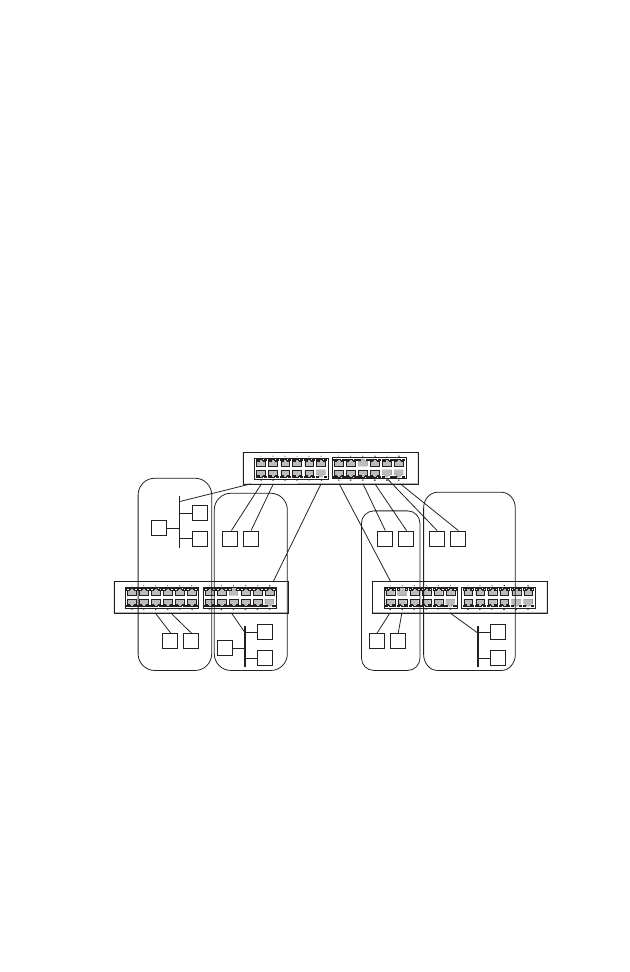
C
ONFIGURING
THE
S
WITCH
3-184
To implement GVRP in a network, first add the host devices to the
required VLANs (using the operating system or other application
software), so that these VLANs can be propagated onto the network. For
both the edge switches attached directly to these hosts, and core switches
in the network, enable GVRP on the links between these devices. You
should also determine security boundaries in the network and disable
GVRP on the boundary ports to prevent advertisements from being
propagated, or forbid those ports from joining restricted VLANs.
Note: If you have host devices that do not support GVRP, you should
configure static or untagged VLANs for the switch ports
connected to these devices (as described in “Adding Static
Members to VLANs (VLAN Index)” on page 3-190). But you can
still enable GVRP on these edge switches, as well as on the core
switches in the network.
Forwarding Tagged/Untagged Frames
If you want to create a small port-based VLAN for devices attached
directly to a single switch, you can assign ports to the same untagged
VLAN. However, to participate in a VLAN group that crosses several
switches, you should create a VLAN for that group and enable tagging on
all ports.
Ports can be assigned to multiple tagged or untagged VLANs. Each port
on the switch is therefore capable of passing tagged or untagged frames.
When forwarding a frame from this switch along a path that contains any
Port-based VLAN
1
2
9 3 4
10 11
12
13
14
5 6 7 8
15 16
18
19


















